We Know Jack: The Case Against Assisted Suicide, #1
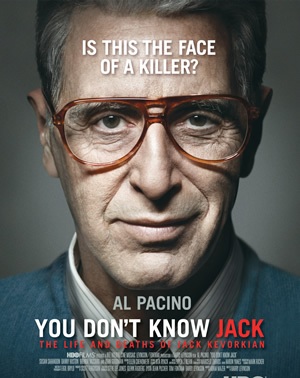
“You Don’t Know Jack” by Cine Mosaic, HBO Films, Bee Holder Productions
How Hollywood’s poster boy is endangering your life and the lives of your loved ones.
I wasn’t feeling well, yet persevered through Wal-Mart to buy five goldfish for my dad for Father’s Day. Two days earlier, he handed my mother a list of items he wanted from the grocery store – from Kroger, mind you. Not Wal-Mart. On his list were toiletries and five gold fish. Mom presumed he meant goldfish crackers, not goldfish for the decorative pond in the backyard.
You see, my dad isn’t the caretaker you want if you’re a goldfish who wants to live a long life. He never intends for the fish to die. They just don’t seem to live long. A heavy rain comes, the water overflows, the fish swim out and die. Or, he removes the fish from the pond to protect them while he sprays pesticide in the yard…and forgets and sprays it above the temporary location of the fish too. Careless mistakes such as these have cost many poor fish their lives. (How did I ever survive to adulthood? Thankfully, my dad was more careful when we were kids…hopefully!)
I am the poor soul charged with the task of removing fish from their happy home at Wal-Mart and delivering them to an untimely death at the hands of my dad. I think I purchased the last round of fish last August for Dad’s birthday. I assure you, this time, no small amount of razzing took place before I delivered more goldfish to what might be a frightful fate.
The last time I bought fish for dad, I purchased one large goldfish with a few small ones. As I walked through the store, the large fish swam around viciously, butting his head hard against the plastic bag, nearly knocking the bag from my hand. He kept this up the entire thirty-minute drive home. I consoled him and talked to him, assuring him he was going to a good home. But this time? No sweet assurances, only prayers for the poor fish. Or rather, prayers for my dad’s diligence as their caretaker.
Tired and a bit weak, I needed to rest when I got home from Wal-Mart. I flipped past Larry King and was appalled by what I heard. Here I was, sweating the fate and long life of a few goldfish while the value of the human beings was being tossed about as carelessly as that of a few goldfish!
Larry King was interviewing Jack Kevorkian, Dr. Death. In the interview, Kevorkian’s assisted suicide of human beings was repeatedly called an “act of mercy.” The 1998 killing of Thomas Youk, a man diagnosed with ALS, was also termed an “act of mercy,” though Kevorkian was convicted of second degree murder and sentenced to 10-25 years in prison for Youk’s death.
Rather than an agent of death, Kevorkian now seems to be portrayed as a knight on a white horse, rescuing the human race from wasted, unbearable pain and suffering. After serving eight years in prison, he is now apparently deemed a hero by many – one who suffered for our freedoms, our rights.
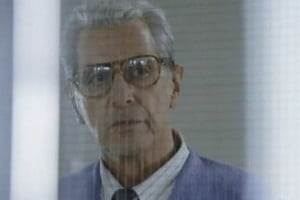 In true Hollywood fashion, no matter the degree of evil, violence or immorality portrayed, the acts are depicted as harmless, beautiful, enticing, disarmed and somehow even rational. The April HBO movie of Kevorkian’s life entitled, “You Don’t Know Jack,” appears from the trailers to be no exception. Al Pacino plays the former pathologist who helped 130 patients end their lives over a 10-year period before being sent to prison in 1999 for second-degree murder. In one of the trailers, the movie actors – above light-hearted, upbeat, classical music – describe their take on Kevorkian, the movie and their roles:
In true Hollywood fashion, no matter the degree of evil, violence or immorality portrayed, the acts are depicted as harmless, beautiful, enticing, disarmed and somehow even rational. The April HBO movie of Kevorkian’s life entitled, “You Don’t Know Jack,” appears from the trailers to be no exception. Al Pacino plays the former pathologist who helped 130 patients end their lives over a 10-year period before being sent to prison in 1999 for second-degree murder. In one of the trailers, the movie actors – above light-hearted, upbeat, classical music – describe their take on Kevorkian, the movie and their roles:
Al Pacino: “I didn’t know that he [Kevorkian] was as committed as he was. I didn’t know that he was as intelligent as he was…I didn’t know that he was as humorous, because of course the intelligence comes to humor. I would like to be that smart. Here was an opportunity to play someone that is smart; it’s fun. That’s what being an actor is about.”
As several actors expound on Kevorkian’s creativity, Pacino adds, “The paintings, the writings, the music, teaching himself Japanese while he’s in a court of law” – admiring Dr. Death’s many talents.
Brenda Vaccaro: “He’s astoundingly bright and funny.”
Neal Nicol: He’s a character with a capital “C.”
Geoffrey Fieger: “Jack is an extremely creative guy.”
Susan Sarandon: “He is outrageous and at the same time very principled. “
John Goodman: It’s interesting and a lot lighter than you would think. [Neal] believes in jack..Jack has a purpose and Neal wants to hitch onto that.
Danny Huston: He’s certainly a rich character.
According to Pacino, viewers “don’t know this guy.” He is “more than meets the eye…[You Don’t Know Jack is] a portrait of a zealot. I don’t think we see that often.”
Sarandon said that people who dedicate themselves to a cause at the expense of anything else in their lives “are really fascinating people.”
The devaluing of human life, specifically the lives of those whom Kevorkian took – well, it is deemed “interesting and a lot lighter than you would think.” It has admirable qualities. In short, it’s beautiful.
The Beautiful Side of Evil
Many years ago I read a book called The Beautiful Side of Evil. When it comes to assisted suicide, assisted killing, the subject matter is slightly different from the book, but the inference is the same. Pure evil is made beautiful and palatable…and “reasonable.” Hollywood & CNN’s attempt to glamourize assisted killing is like depicting the gas chambers of Auschwitz as upscale assisted living facilities in Florida. This beautification of evil is appalling.
The movie title “You Don’t Know Jack” means ‘Those of you who are pro-life, you don’t know anything.” Actually, it’s those on the other side who are in need of instruction.
Next week HBO airs a documentary of Jack Kevorkian’s life called “Kevorkian.” The documentary synopsis on HBO’s website says that “Kevorkian,”
paints an intimate and surprising portrait of this complex man…Kevorkian is the story of a man whose compassion and vision have largely been misunderstood…One journalist compares him to an ‘Old Testament prophet.’…He’s very disagreeable, hard to take, nobody you want over for a weekend, but somebody who tells us some unpleasant truths.[i]
In other words, “Dr. Death has a few rough edges, but don’t let that keep you from the truths he speaks.” What!?
Let’s take a look at a few real truths.
Right to Die
Kevorkian’s claim: a person is born with the right to take their own life.
The truth: The Bible teaches that we are made in the image of God and therefore, every human life is sacred (Genesis 1:26). Psalm 139:13-16 teaches us that we are fearfully and wonderfully made. God knit us together in our mother’s womb. Our lives are precious and important to Him.
Scripture clearly states that God is sovereign over life and death.
“See now that I myself am He! There is no god besides me, I put to death and I bring to life, I have wounded and I will heal, and no one can deliver out of my hand” (Deuteronomy 32:39).
God ordained all of our days before even one of them came to be (see Psalm 139:16). He has appointed a time for our death.
- “And as it is appointed unto men once to die, but after this the judgment” (Hebrews 9:27).
- “To everything there is a season, and a time to every purpose under the heaven: A time to be born, and a time to die; a time to plant, and a time to pluck up that which is planted” (Ecclesiastes 3:1-2).
- “Do not be overwicked, and do not be a fool—why die before your time? (Ecclesiastes 7:17).
To assist someone in committing suicide is to commit murder and this breaks God’s unequivocal commandment in Exodus 20:13. “You shall not commit murder” includes self-murder.
Quality of Life
Kevorkian’s claim: When discussing his health with Larry King, 83-year-old Kevorkian described his health as “weak” as the result of an infection acquired while in prison. When asked how he deals with his own death mentally, Kevorkian said he deals with it like everyone else: “When you are feeling well you hate to leave it,” Kevorkian answered. “Life is nice. But when you’ve got affliction that is so persistent and torturous, then you change your mind.”
In other words, the “truth” about quality of life, as Kevorkian sees it, is that one’s value and purpose on earth is measured strictly upon the basis of how they feel and what they are able to accomplish.
The truth: Jesus said, “I have come that you might have life, and have it more abundantly” (John 10:10). Jesus demonstrated a quality of life that was abundant even through his suffering and dying.
Quality of life is not determined by the physical abilities one does or does not possess. A study reported that long-term spinal cord injured (SCI) survivors report a good or very good quality of life, even when facing major challenges. One study of survivors injured more than 23 years indicates that over 76% of the participants rated their quality of life as either good or excellent. The level of injury and degree of paralysis had little effect on their quality of life. After a catastrophic injury or illness, people usually re-prioritize their lives. They often express great joy and gratefulness for life itself. Research with both disabled and non-disabled populations shows that quality of life is an internal concept; it is more dependent upon how we view life than what we have.[ii]
In truth, quality of life has nothing to do with temporal circumstances – with what our bodies can do, how we feel, what material possessions we have.
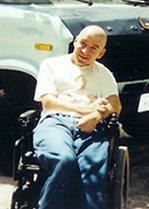
Stuart Cureton
True “quality” in life is found in a relationship with Jesus Christ. This is why troubling circumstances can be so sweet. They cause us to grasp the One who is the only true quality in life – Jesus Christ. Along with His strength, He gives us His eternal view of life. The result? Contentment. Peace. Joy.
Stuart Cureton has been in a wheelchair for 30 years following a car accident in 1980. Stuart says, “I am very grateful [for the accident]…There is a purpose,” he says, “a purpose of encouraging others and showing them what they’re missing…especially those who don’t know the love of Christ.”
Autonomy
Kevorkian’s claim: It’s your life, your decision. Do what feels best for you. Disability, discomfort, depression and illness prevent you from enjoying life and contributing to those around you; there is no point in remaining here and suffering. It’s your body, your ”right’ to die.
The truth: Our lives – no matter the state of our health or abilities – affect everyone around us.
- “For none of us lives to himself alone and none of us dies to himself alone” (Romans 14:7).
My grandmother spent twenty years confined to bed. In her last years here on earth, she could hardly be turned in bed without breaking bones. Mama Rie spent countless hours, weeks, months, years in virtually one position and immeasurable, constant pain. Although she never lost her gracious disposition, she did at times get weary and question the reason why God left her here so long. (This was during the years of my intense suffering.) My mother would remind her that God worked through her prayers for me and the other grandchildren. What Mama Rie didn’t realize is that the sheer fact that she was persevering caused me to persevere. I would think of her example, her endurance in spite of unbelievable suffering, and be encouraged to persevere as well. She wasn’t living to herself alone, but for me, for the rest of the family and for those who knew her and were taught by her sweet, godly disposition in the face of immeasurable suffering.
The truth: Our life – neither its beginning nor its end – is ours to govern.
- “For none of us lives to himself alone and none of us dies to himself alone. If we live, we live to the Lord; and if we die, we die to the Lord. So, whether we live or die, we belong to the Lord” (Romans 14:7-8).
- “You are not your own; you were bought at a price. Therefore honor God with your body” (I Corinthians 6:19b-20).
The voices of Voluntary Euthanasia societies pushed to the forefront of society 40 years ago. Contemporary fascination with assisted suicide comes from recent trends in thought that, by rejecting religious understandings of humanity, have come to increasingly identify human life in physical terms, within the parameters of the body.
The idea of personal autonomy – personal rights – and the movement to legalize assisted suicide have descended from 1970s feminism. Nothing better demonstrates this than the 1973 publication of Our Bodies, Our Selves, which led to the extension of demands for bodily autonomy. The exposition of previously private areas of life, like sexuality, also exposed death to wider scrutiny, especially after the publication of Elizabeth Kubler-Ross’s On Death and Dying in 1969.
The 1973 Roe vs. Wade decision added fuel to the autonomy fire. In this decision it was determined that the constitution (although it doesn’t literally state it) guarantees the right to privacy. Suddenly, a woman’s “personal right” to choose overrode an unborn child’s right to life. Since then, we have slid further down the slope. Nowautonomy is an overriding right – a person doesn’t have to be terminally ill anymore to have a doctor kill them.
Historian Ian Dowbiggin notes that in the 1970s ‘[e]uthanasia ceased being defined as active mercy killing, with its disturbing overtones of coercion and social usefulness, and increasingly became viewed as personal freedom from unwanted interference in one’s own life’.[iii] It has been this banner of bodily autonomy under which modern assisted suicide – voluntary euthanasia – emerged.
The Value of Suffering
Kevorkian’s claim: In having a right to die, people have a right not to suffer.
What the members of the right-to-die societies seek is not so much the right to die as the right not to suffer.
Although the British magazine Spiked is not religious, and certainly not traditional, it has run several pieces against physician assisted suicide. In one of these pieces Kevin Yuill writes, from a secular perspective,
One can no longer argue that human suffering is certain and preordained without being judged conscienceless, even inhuman. In the past, suffering was seen as part of life, a trough that made the peaks appear higher. There no longer appears to be any reason for suffering, given the apparent meaninglessness of life; all suffering now appears unnecessary and thus is condemned.[iv]
The truth: “Consider it pure joy, my brothers, whenever you face trials of many kinds, because you know that the testing of your faith develops perseverance. Perseverance must finish its work so that you may be mature and complete, not lacking anything” (James 1:2-4).
For those who know Jesus Christ and have yielded their lives to Him, suffering is packed with meaning and purpose…and joy! (see Pure Joy.) Perseverance must be allowed to finish its work.
Blessed is the man who perseveres under trial, because when he has stood the test, he will receive the crown of life that God has promised to those who love him (James 1:12).
We are more than conquerors IN all things, not by being removed from them.
Who shall separate us from the love of Christ? Shall trouble or hardship or persecution or famine or nakedness or danger or sword? No, in all these things we are more than conquerors through him who loved us (Romans 8:35, 37).
Even though many who are choosing assisted suicide do not have a terminal illness, what if we do? How do we face the process of dying?
36As it is written: “For your sake we face death all day long…” 37No, in all these things we are more than conquerors through him who loved us. 38For I am convinced that neither death nor life, neither angels nor demons, neither the present nor the future, nor any powers, 39neither height nor depth, nor anything else in all creation, will be able to separate us from the love of God that is in Christ Jesus our Lord (Romans 8:35-39).
We can face death as more than a conqueror. Neither fear nor pain can separate us from God’s love. As we walk through the uncertainties of this life, God’s love and grace will be measured out to us in the exact time at the exact amount we need them.
Scripture says that “those who suffer according to God’s will should commit themselves to their faithful Creator and continue to do good” (I Peter 4:19). We commit ourselves to the One who made us, who determined in advance the day we would be born and the day we would die. We submit our lives to Him, to His authority and trust Him to infuse us with His strength, which is “unyielding and impenetrable” (see Philippians 4:13, Psalm 62:4-5). We do not try to be like God and choose to take our own lives.
God does not allow us to be tested beyond what we can bear. But with the trial, “he will also provide a way out so that you can stand up under it” (I Corinthians 10:13). He is faithful to provide a way for us to endure, to “escape” as one translation says. The escape is not death. The way out is His Word – His promises and His Spirit breathing them fresh into our situation moment by moment. The “way out” may come one moment in a strictly spiritual sense – God breathing upon His Word and reminding us that He cares. Another moment it may be relief through medical treatment or an encouraging visit from a friend. Regardless the tangible manifestation, God provides a way out by providing help through His Spirit. We commit our lives to God, trust Him and receive His enabling.
Terminally Ill
Kervorkian’s claim: The people whose suicide he assisted were terminally ill or hopeless. His interests were purely altruistic. His goal was solely the well-being of the patient.
The truth: Over three-quarters of the 130 people Kevorkian helped commit suicide did not have a terminal illness. Many of them were in the early stages of illnesses like MS or other neuro-muscular diseases. Some had spinal cord injuries…or non-life threatening disease such as chronic arthritis.
Bioethics attorney Wesley J. Smith is disgusted by the beautification of a culture of death. “Jack Kevorkian assisted the suicides of at least 130 people–most of whom were not terminally ill and five of whom were not sick according to autopsies–and murdered one,” Smith said. “He ripped out the kidneys of one of his victims after death, that of a former cop who had become quadriplegic from a gunshot wound.”
Smith asserts that Kevorkian’s ultimate goal was “obitiatry,” the experimenting on living human beings before they were euthanized.[v]
Kevorkian was intrigued by the act of dying. He proposed that medical experiments be conducted on death-row prison inmates while they were still alive. An article in the examiner states,
“His views were presented in a paper to the American Association for the Advancement of Science where he explained the role condemned inmates would be providing as a service to humanity before their execution. From here on out, his peers began referring to him as “Dr. Death” and he began his lifelong crusade for assisted suicide.”[vi]
Kevorkian is proud to be known as “Dr. Death.” Our culture is quickly becoming a culture of death. In this culture, death is to be welcomed and those who are less worthy of living— by whatever standard of judgment — should die and get out of our way. They should be removed from our medical bills, our consciences and our busy schedules and agendas. Kevorkian is being portrayed by Hollywood and liberal media as an angel of mercy. In reality, he is a mirror image of the darkness of the human soul.
Albert Mohler writes,
As a pathologist, Kevorkian called for medical experiments to be done on prisoners. Later, at Pontiac (Mich.) General Hospital, Kevorkian was seen transfusing blood from cadavers into living patients. He has praised Nazi doctors for their concentration camp experiments, championed suicide, and called for the creation of death centers known as “obitoria,” where those desiring death could be served with clinical efficiency.[vii]
In the 1960’s Kevorkian took art lessons and produced a series of gory paintings on death, featuring body parts, cannibalism, and genocide. The HBO trailer for “You Don’t Know Jack” frames these paintings in a setting of intrigue and creativity…mixed with a little eccentricity. Not evil. Not darkness. Not the twisted expressions of a depraved mind. No. Instead, they are the odd choice of an intelligent, talented, creative but eccentric man. What an atrocity! The literal frame of one of his paintings was colored with blood from blood banks, mixed with Kevorkian’s own. “People may wince at some of my paintings, but nobody has yet denied their forceful accuracy,” Kevorkian said.
Kevorkian’s experimentations with death have plummeted the world down a slippery, slimy slope. No longer must one be terminally ill to request death on demand.
Death on Demand
Sir Edward Downes, former conductor of the British Royal Opera, made a suicide pact with his wife of 54 years. They drank liquid poison that caused them both to die. The story of their death is described in British papers with as much romance as their long marriage.
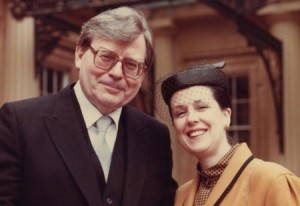
Sir Edward and Joan Downes
“They drank a small quantity of clear liquid and then lay down on the beds next to each other. They wanted to be next to each other when they died. They held hands across the beds. Within a couple of minutes they were asleep and they died within ten minutes.”
Their son who watched them die called it a “civilized way to end your life.” They “died peaceably and under circumstances of their own choosing,” he said.
Joan, a former ballerina, was 74 years old when she died. She had recently been diagnosed with terminal liver and pancreatic cancer and given a short time to live. Sir Edward, though 85 and in failing health, was not terminally ill. Assisted suicide is illegal in Britain, so they traveled to Zurich, Switzerland to a clinic called Dignitas that will arrange for a patient’s death by barbiturate for a fee of about $700 per patient.
“Dad felt he was physically winding down,” their son said. “There were all sorts of things he wanted to do but couldn’t.” Although Sir Edward was virtually blind and had lost some of his hearing, this hardly constitutes a terminal diagnosis. A ‘clinic’ will deliver death on demand because there are things you want to do, but can’t?!
The real motive for Downes was fear of loneliness. According to friends, their lives were tightly intertwined. In a British news report, Antonio Pappano, Music Director for the Royal Opera House calls the Downes’ deaths a “beautiful gesture of support for each other.” He says he will miss them but adds, “I don’t think either one of them could have lived without the other.”
Downes faced the prospect of life without his soul mate of 54 years, but sorrow and future loneliness is not grounds for a doctor to assist in a suicide. Clearly, “death on demand” is okay to many, no matter the reason.
Slippery Slope
Kevorkian’s claim: Religion and medical ethics are ‘depriving’ individuals of the most basic right – the right to die. Exercising this right is totally benign. It will liberate society.
The truth: The freedom to die will soon become the obligation to die.
In these days of Social Security and Medicare debt, healthcare reform and the push to cut medical costs, this is downright scary! TIME magazine quoted President Obama as saying “Those at the end of their lives are accounting for 80% of the total healthcare bill.” Critics of President Obama’s government healthcare plan voiced concern over the probability of bottom-line watching – government bureaucrats making life-and-death decisions over who may or may not receive expensive medical care (as is already being done in Great Britain).
If we are going to change the way we spend money at the end of our lives, it will be by removing a feeding tube, denying life-saving, life-extending treatment…and sliding at a feverish pace down this slippery slope into a culture of death. The time is quickly coming when a right-to-die will become a duty to die.
We don’t want to believe that thinking reminiscent of the Nazis deeming people “life not worthy of living” can actually happen here. Yet doing so ignores the fact that an insidious culture of death already exists here and has infected America for several decades. From Planned Parenthood – which supports the murder of 1.5 million unborn children each year – to groups like the Hemlock Society – which have successfully fought to legalize doctor-assisted suicide in several states – we already deem some lives “not worthy of living.” Movies such as Million Dollar Baby, where murdering a severely injured person is viewed as an heroic and loving act, promote the culture of death. In the movie The Hours, characters are praised for having the “courage” to end their lives when they become a burden to their loved ones.[viii]
In Oregon physician-assisted suicide is legal. One-third of those who chose assisted suicide in Oregon last year stated the burden on their families as the reason they wanted to die. The beautification of this evil makes it tempting…almost reasonable. Hollywood’s glamorous, sly, upbeat portrait of Kevorkian almost pulls the wool over the eyes of Christians. The lives of those who chose assisted suicide seem so pathetic, so miserable, so deserving of this “act of mercy.”
I was hesitant to even cite the HBO source above, concerned that someone might go to their website, watch the trailers and be deceived. It’s nothing but trickery packaged by millions of dollars, Hollywood’s top artists and award winning actors. No longer is the enemy content to simply ask as he did of Eve, “Did God really say?” Now he is cloaking his lies in media blitzes, Hollywood glamour and slick subtlety.
“Be self-controlled and alert. Your enemy the devil prowls around like a roaring lion looking for someone to devour [in this case, literally]. Resist him, standing firm in the faith” (1 Peter 5:8-9a).
We cannot be deceived by the so-called rational arguments that people have the autonomy to choose their death. We have a responsibility to protect the weak and vulnerable in our society. … God created us equal. None of us should be at another’s disposal. At such a time, we should be fighting to safeguard the rights of the vulnerable and weak. When we allow their rights to be diminished, we jeopardize everyone’s rights.
Questions:
- What can you do to turn the tide on the culture of death? How will you speak up?
- How are you protecting the weak and vulnerable in your family, your church, and your community?
RELATED ARTICLES
- Scott Brodie: Answers and Inspiration, Jack #3— Jack Kevorkian went to prison for assisting in the suicide of a man with ALS. Meet Scott Brodie, a man with ALS who chose life. Despite being in the later stages of ALS, Scott answers questions about physician-assisted suicide and the dignity of his life.
- Walking Through the Valley: The Scott Brodie Story — Meet Scott Brodie, a man with ALS who has chosen life.
- We Know Jack: Dr. Death deals a blow to American’s health care coverage, #2
[i] http://www.hbo.com/documentaries/kevorkian/index.html#/documentaries/kevorkian/synopsis.html
[ii] S. Charlifue, “Quality of Life,” Phases: SCI & Aging Vol 3, No 2 p 1.
[iii] http://www.spiked-online.com/index.php?/site/article/207/
[iv] http://www.spiked-online.com/index.php?/site/article/207/
[v] http://www.lifenews.com/bio2948.html
[vi] http://www.examiner.com/x-29099-Grand-Rapids-Public-Health-Examiner~y2010m4d22-HBOs-Jack-Kevorkian-film-spotlights-assisted-suicide
[vii] http://www.albertmohler.com/2009/07/16/dr-death-on-prime-time-the-slippery-slope-toward-murder/
[viii] Idea from Diane Singer: http://www.breakpoint.org/the-center/columns/changepoint/12967-the-death-of-death
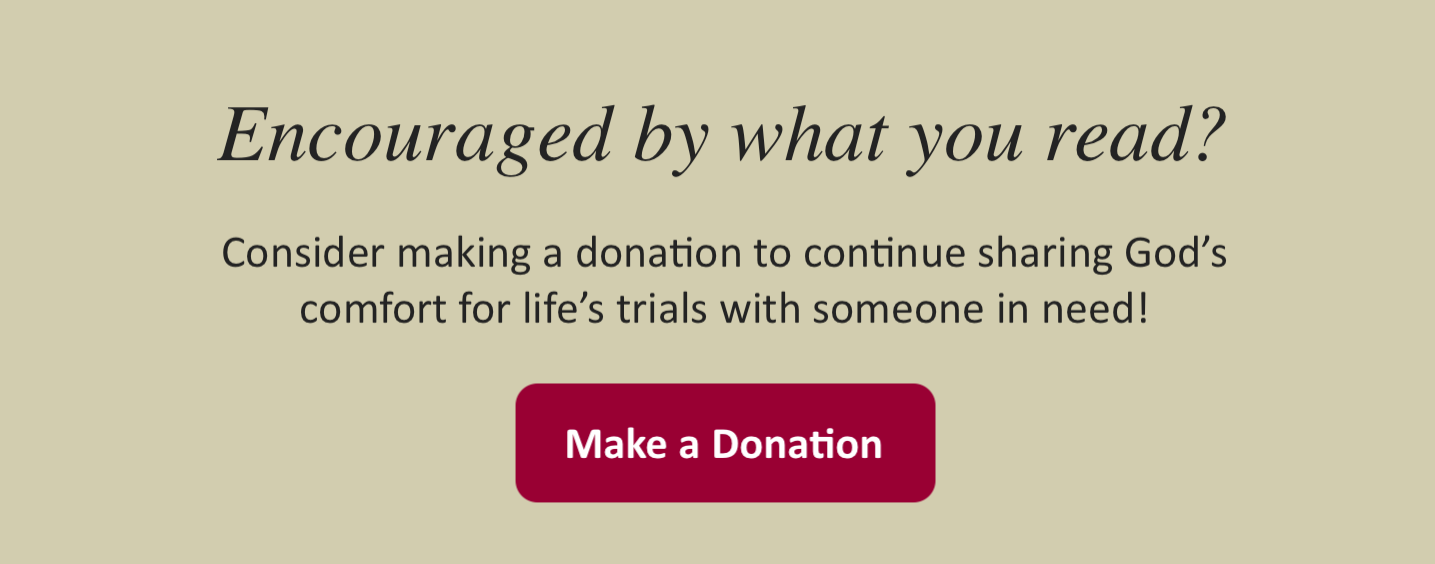
Disclosure of Material Connection: Some of the links in the post above are “affiliate links.” This means if you click on the link and purchase the item, Shades of Grace will receive an affiliate commission. Regardless, I only recommend products or services I use personally and believe will add value to my readers. I am disclosing this in accordance with the Federal Trade Commission’s 16 CFR, Part 255 “Guides Concerning the Use of Endorsements and Testimonials in Advertising.”




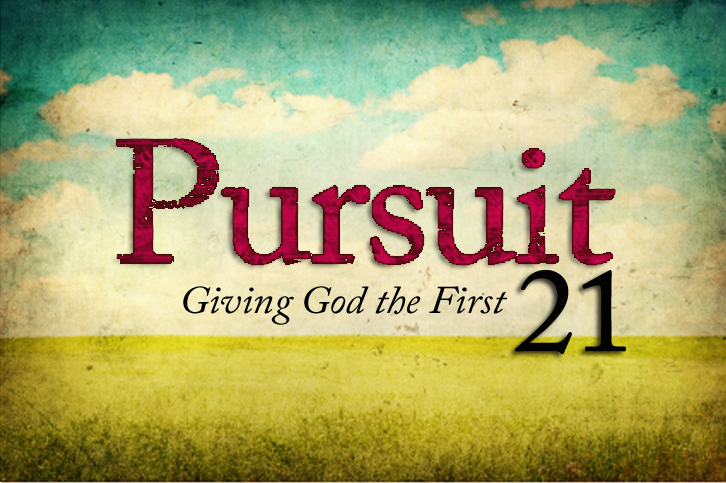

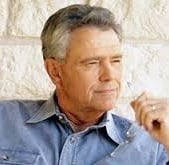 “Natalie Grace Nichols is experiencing God’s grace and freely expressing it. My wife, Betty, and I thank God for the ministry of Jesus through Natalie.”
“Natalie Grace Nichols is experiencing God’s grace and freely expressing it. My wife, Betty, and I thank God for the ministry of Jesus through Natalie.”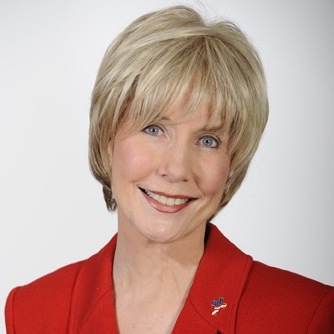 “I’m so thankful that God is raising up women like Natalie for a new generation, providing biblically balanced teaching, encouragement, and comfort for people who are enduring life’s trials.”
“I’m so thankful that God is raising up women like Natalie for a new generation, providing biblically balanced teaching, encouragement, and comfort for people who are enduring life’s trials.”